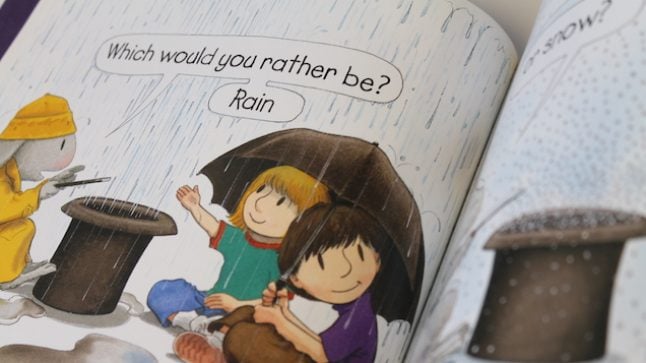Series: Book Ideas
3 Books That Encourage Simple Graph Explorations with Young Ones

At the heart of it, graphing in the early years is about quantifying information in order to answer a question. That requires children to organize data in some visible way so that comparisons and generalizations are possible. Here are a few good kids books with good questions to spark simple graph explorations with children.
-
Anno’s Flea Market by Mitsumasa Anno
Anno’s Counting Book is a favorite of ours, so we would be remiss if we didn’t mention another title from Mitsumasa Anno, Anno’s Flea Market. The illustrations depict the variety of wares found at a Saturday morning flea market. How many stalls have books? What kind of games and toys are on display? The intricate illustrations prompt many different questions that can be discussed. Then, you can invite children to bring in their trash and treasures for your own indoor flea market. Everyone will be curious to answer the question, “What kinds of things do we have at our flea market?” Sorting the items into categories for an object graph allows children to count, compare, and draw conclusions.
-
Which Would You Rather Be? by William Steig
This book of questions by celebrated author/artist William Steig gets everyone talking! Would you rather be a stick or a stone? Rain or snow? A grown-up or a child? Children enjoy taking surveys of friends and family, and this book gives them a simple model for a forced-choice question. A T-chart with tallies or other simple marks can make a visual comparison of preferences easy to see and share. Children are motivated to find answers when it’s their own questions they are asking.
-
Whose Shoes? by Stephen R. Swinburne
Discussing and organizing shoes is a natural way to connect math to everyday life. One reason is because footwear is something we all have in common. In Whose Shoes?: A Shoe for Every Job, we have many examples of different types of shoes. Oftentimes shoes are associated with the type of work one does, while other times what we wear on our feet is dictated by the weather outside. The variety of styles makes for good conversation. For example, if we discover that there is a significant number of people wearing boots, we can draw a conclusion about what the weather outside might be. We also might make a generalization about winter footwear versus summer footwear. You can watch an example of an activity in our Focus on the Lesson series called Shoe Graph, along with some planning and reflecting conversations here. Or take a time out from shoe sorting to play a game of heads or tails while collecting data about the fun you’re having.